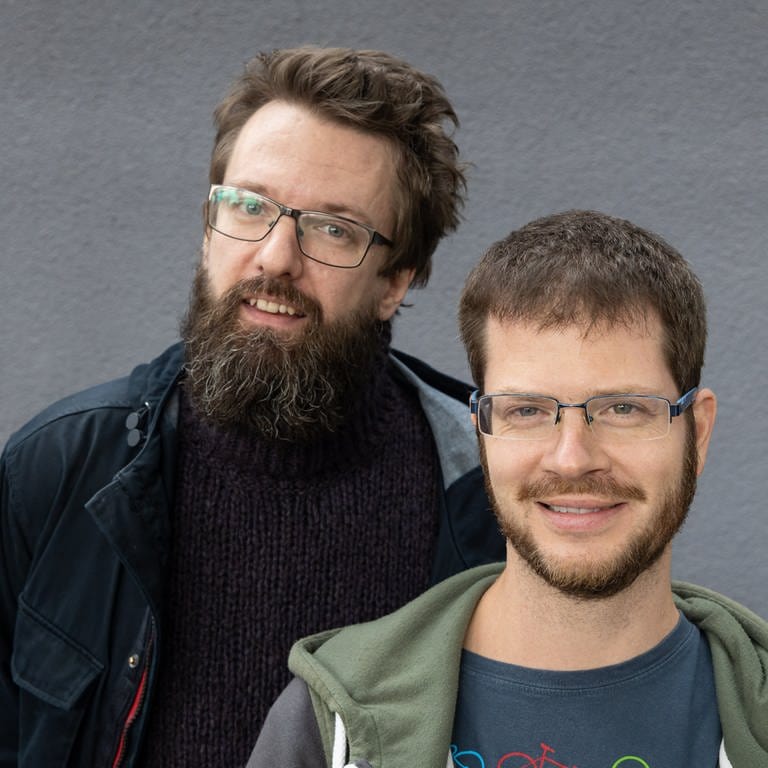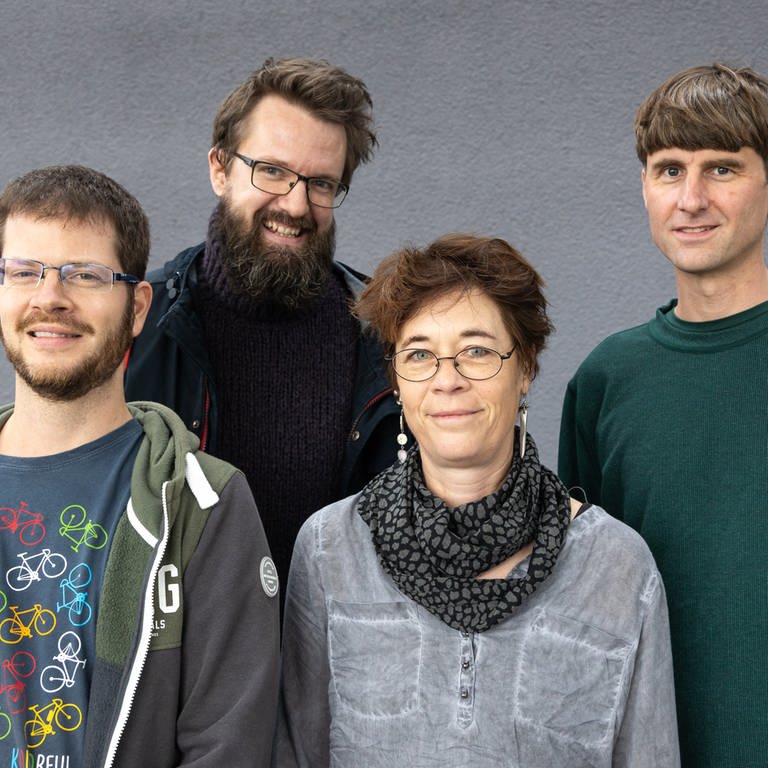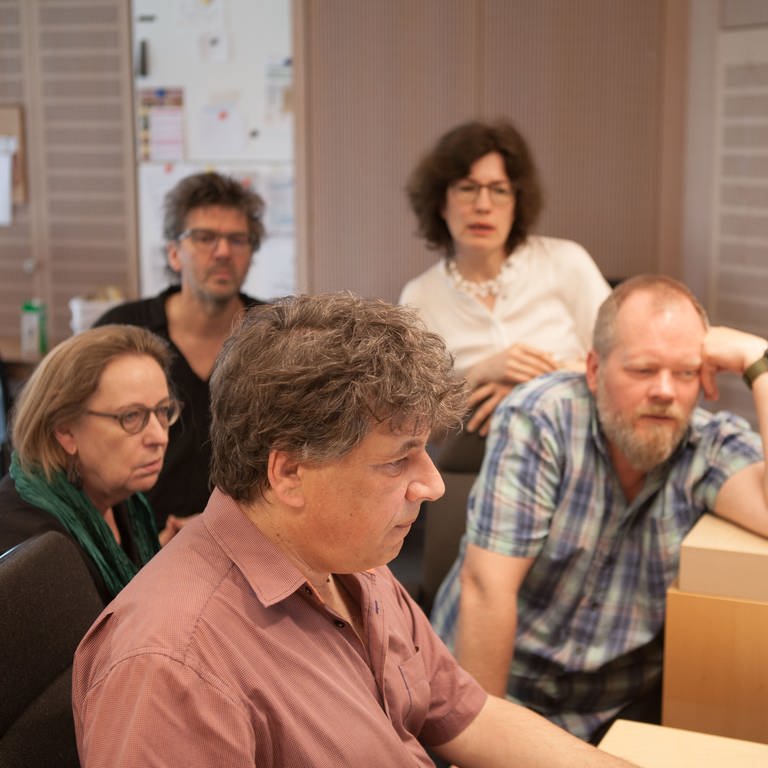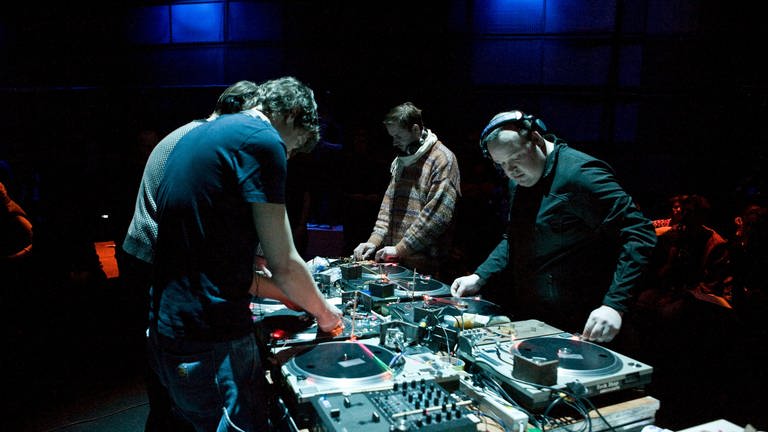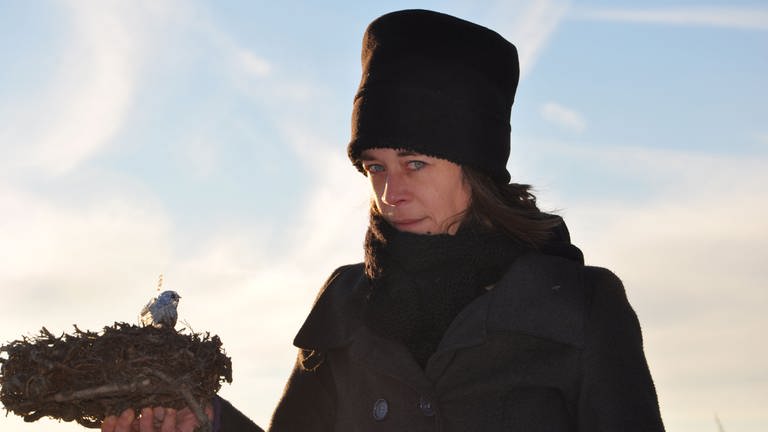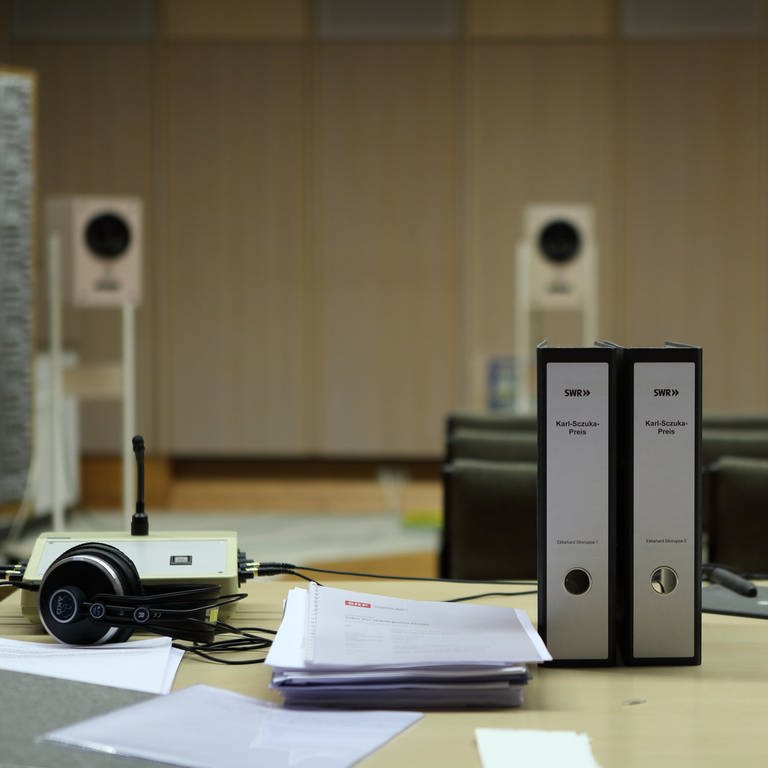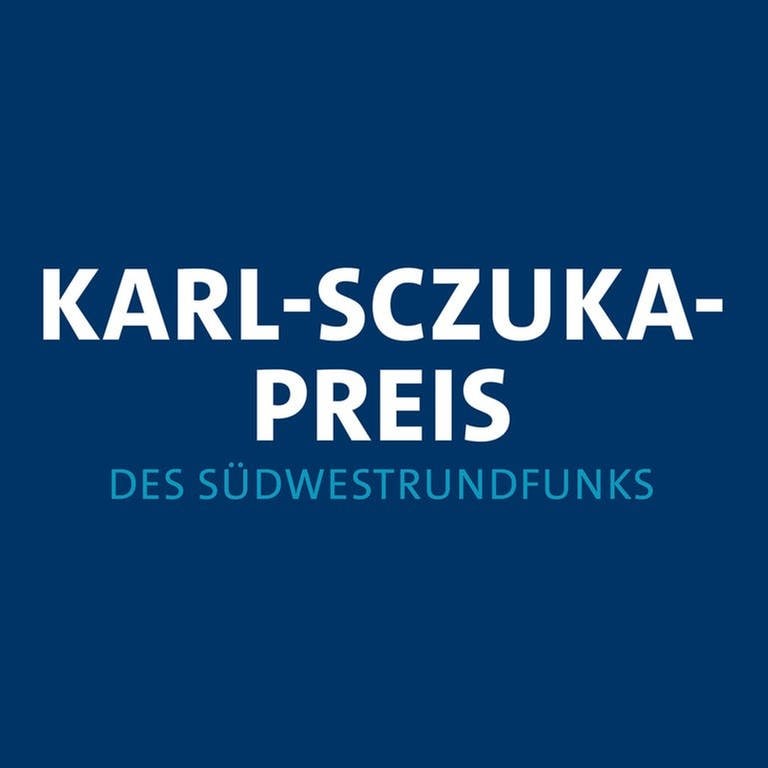The history of media always includes the history of the various apparatuses with which the media are produced. Thus the history of radio always also includes recording media: from the phonograph rollers to the wax or shellac records, from magnetic tapes to digital storage media. In their piece Meerschallschwamm und Schweigefang, Ulrike Janssen and Marc Matter write a fictitious history of sound recording using no less fictional recording and playback devices. However, though the piece is not a fake feature – but rather a work for a sound art broadcast by Deutschlandfunk Kultur – a great deal of its language has been modulated (like the sound waves on which it is transmitted).
The piece was inspired by the 1977 essay A History Of Recorded Sound by British composer Hugh Davies (1943-2005). Davies traces the history of sound recording in tabular form since the first pre-Christian millennium – including a section for “Legends and Literature”, in which imagined technologies are used. Ulrike Janssen and Marc Matter have derived some of their ‘apparatuses’ from Davies, and invented others according to a similar logic
The “sound-wounders”, recorded by various “missingmachines”, are – according to the narrative framing – presented by an audio guide of a destroyed museum, the “soundrecordingstorag”, which does not always function faultlessly. Ulrike Janssen, winner of the Karl-SzukaFörderpreis in 2011 for the piece vogelherdrecherche after the cycle of poems by Thomas Kling, and Marc Matter, co-founder of the “Institut für Feinmotorik” (Institute for Fine Motorics), also a 2011 Sczuka Prize winner ( for Die 50 Skulpturen des Institut für Feinmotorik), have come up with their own language for their first joint piece, which largely dispenses with final syllables and whose grammar has certain peculiarities.
What one learns about the “terrestri knowledge” fixed in “sound and speeching” is highly stimulating. While one tries to follow the linguistic contortions of the audio guide, the functionality of a “doorbuzzer-bamboopointer”, for example, is explained. It consists of a bamboo tip that runs like a record needle through a groove and which uses the door panel itself as a loudspeaker. Each time a door is opened and closed, a short sentence sounds, sometimes forwards, sometimes backwards: “Mal los : So la(h)m” – both an acoustic palindrome and a mixed message : “Let’s go : So lame”. For the listener, this results in a double pleasure: first, the language of the audio guide has been successfully decoded and second, the functionality of the sound recording and playback device has been understood. On top of that, there is also an “example hear” (an audio example) of the sound produced in this way, which fulfills or disappoints the expectations created by the descriptions of the equipment. It is precisely this logical pivot that is one of the hallmarks of the comedic, which in this piece makes for the humorous and amusing way in which the material is handled, and which gives a light touch to the often difficult conceptual nature of sound art discourses. The performance of the speaker Susanne Reuter – who has risen to the challenge of such an artificial language in her role as audio guide – can hardly be overestimated. Her vocal delivery could also be regarded as an artificially generated one, as it lacks any breath. Not all of the apparatuses presented are as simple as the “doorbuzzerbamboopointer”. For the “soundwaveknot”, for example, you need a “soundrewindcrank” and a “phonseparator” to restore the recorded sounds. In his 16th century work Gargantua and Pantagruel, François Rabelais had already described the fact that sound events can also be frozen; Janssen and Matter invented a “soundfreezer” for this purpose. But what are all these devices for? As a “memorable rememberhelper useful for both games and spies”. But sometimes one simply cannot be sure about the sense and purpose. For example the “headcryptographer” is described succinctly as: “Use unclear”.
The radio play Meerschallschwamm und Schweigefang, however, is not just an anecdotal stringing together of bizarre apparatuses (including those mentioned in the title), but a composition of sound art that brings together a variety of digital and analog sound manipulation techniques. With the “Speechingsoundemulsifier”, for example, one also experiences the way it functions in a self-reflexive and self-referential way, in execution so to speak: the apparatus mixes speech and sounds in speech and sound, to form an emulsion. As in a drawing by the Dutch graphic artist M.C. Escher, one’s perception jumps back and forth between foreground and background time and again, and one can never be quite sure whether, on the acoustic level, one has not become caught up in one of those impossible geometric structures à la Escher. At the end of the almost 45-minute radio play, the essay Der Lärm - Eine Kampfschrift gegen die Geräusche unserer Lebens by Theodor Lessing from 1908 is quoted: “If you’ve happily escaped a sound, you’ll soon surely get into another”. Rarely has one been so happy to get lost in a work of sound art.
About the authors
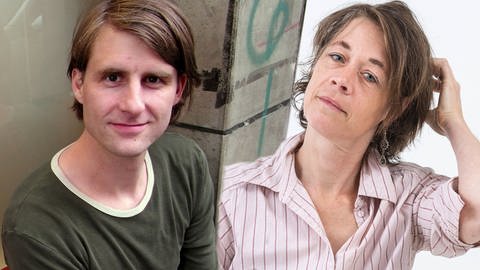
Ulrike Janssen, born 1967, studied German language and literature, philosophy and French at the University of Cologne, graduated in 2000. Since 2000, she has worked as an author, director and producer on numerous features and radio plays for radio (WDR, DLF, SWR, hr and others). Since 2014 she has worked as an author and director for theater, and since the 2018/19 season also as a dramaturg at the Theater der Keller, Cologne. She teaches at the University of Cologne, the Robert Schumann Hochschule Düsseldorf and the Hochschule Düsseldorf. She was a scholarship holder of the Studienstiftung des Deutschen Volkes, received the Grenzgänger-Stipendium of the Robert Bosch Foundation in 2008, a work commission for the Festival Frankfurter Positionen in 2011 and also the Karl Sczuka support grant in 2011. In 2014 she was nominated for the Kurt-Hackenberg-Prize for political theatre, in 2015 she received the annual prize of the hr2-Bestenliste and the annual prize of the Deutsche Schallplattenkritik, and in 2017 the Kölner Theaterpreis. Ulrike Janssen lives in Cologne.
Marc Matter, born 1974 in Basel, studied media art at the KHM in Cologne. He is a founding member of the Institut fuer Feinmotorik and is particularly interested in the musical capacities of language and sound writing. Since 2010 he has been a lecturer for music and text at the Institute for Music and Media at the Robert Schumann Hochschule Düsseldorf. He has realized the performances of electroacoustic language pieces and the commissioned compositions for radio (SWR, WDR, DLR and others). In 2012 he was a scholarship holder of the Jan Van Eyck Academy Maastricht, where he worked together with the programmer Robert M Ochshorn on an interactive reinterpretation of the Lettristic alphabet. In 2013, he was a fellow at the Beinecke Library at Yale University for a research paper on the sound poet Henri Chopin and the Revue OU. Together with Swantje Lichtenstein, he curated the cosmosmose festival for performance poetry and verbophony.
